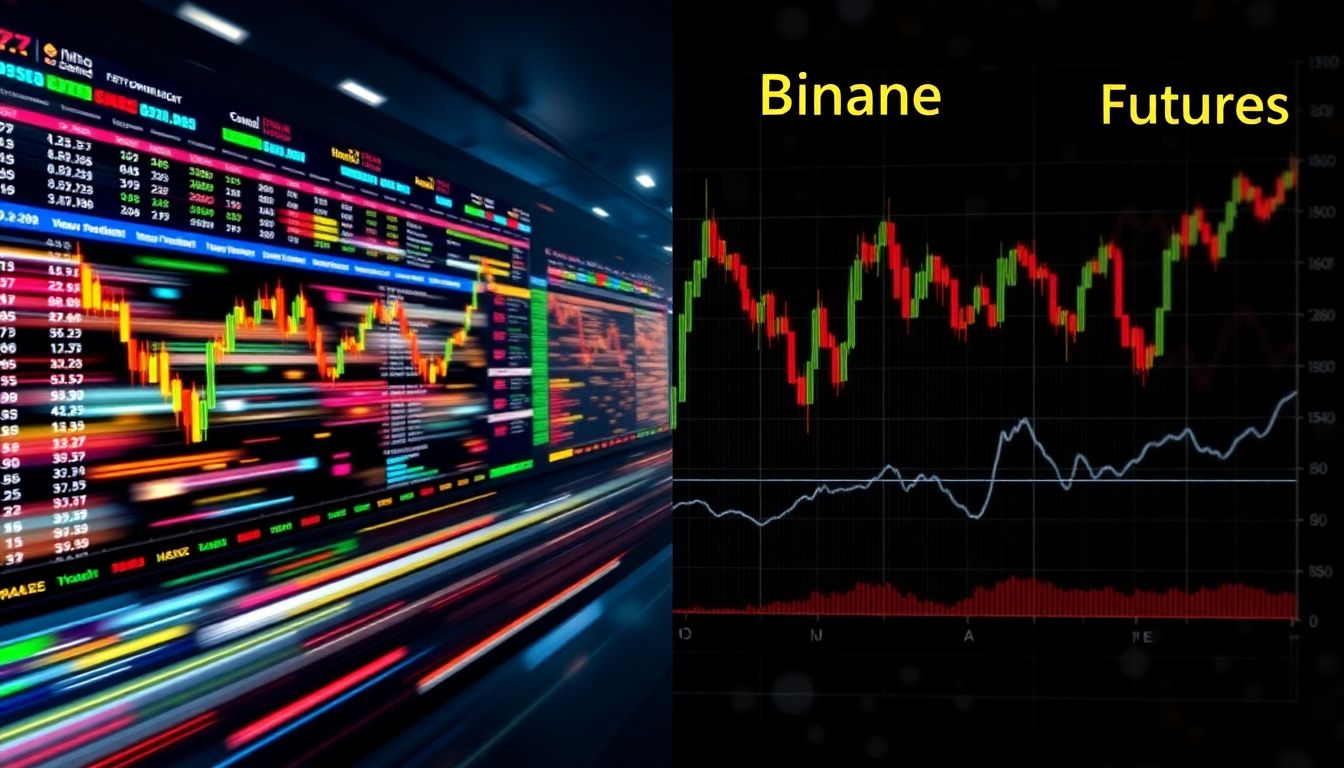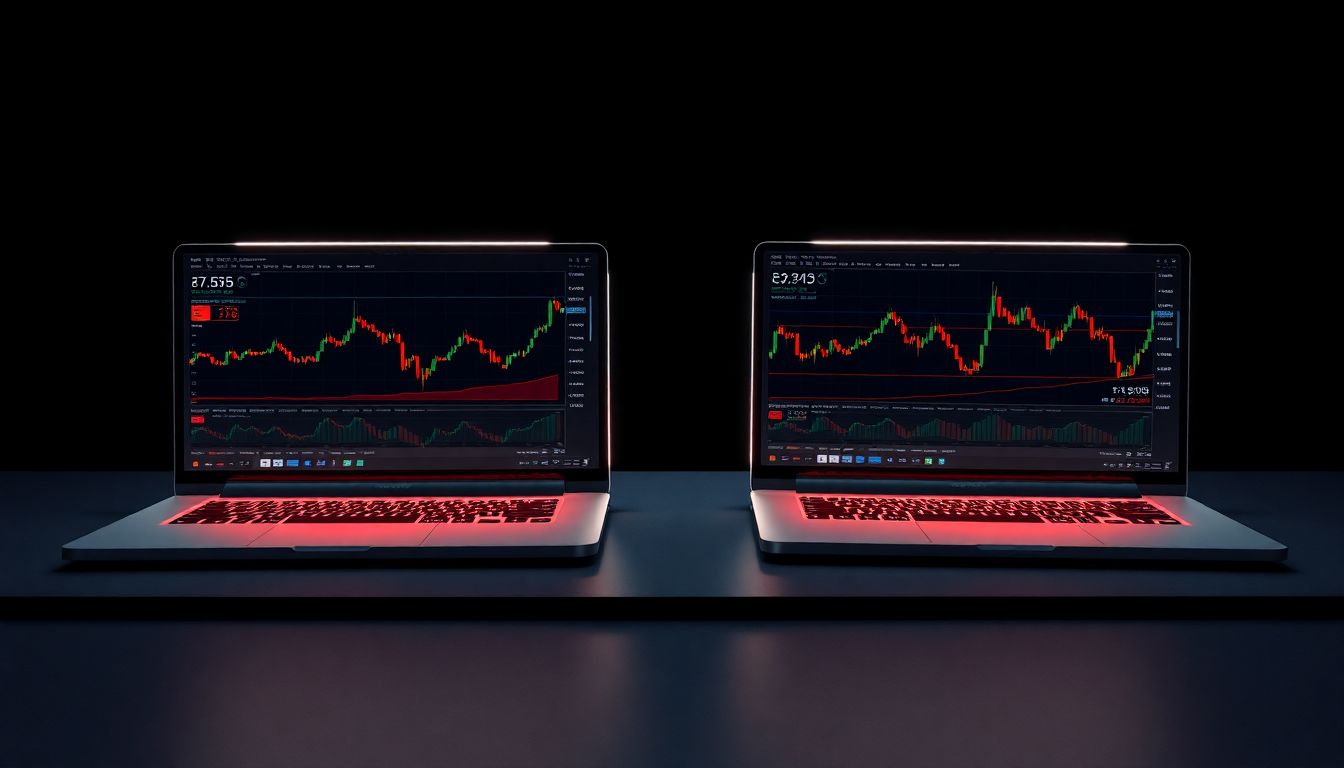LEARN HOW TO TRADE
I will explain you how to start trading from 0 to 100
Is Binance Secure?
What Is Binance Spot And Future Trading.
Exness VS Binance

Unleash Your Inner Trader: Personal Trading Ideas for Financial Success
Ever feel lost looking at all those trading charts and terms? You aren't alone. Many people dream of trading yet feel stuck. The secret? Successful trading isn't a one-size-fits-all deal. It's about finding a system that fits you. That means knowing yourself, your comfort with risk, and what you want to achieve. This article explores personal trading ideas to help you make a plan that works for you.
Defining Your Trading Personality
Before diving into the stock market, look in the mirror. How you trade should reflect who you are. It's not just about the numbers. It's about your feelings, your goals, and your money.
Assessing Your Risk Tolerance
Are you the type to jump out of planes, or do you prefer a good book? Your risk tolerance matters. Some people are okay with big swings in the market. Others want slow, steady growth. A risk tolerance questionnaire can give you clues. Conservative traders might like bonds. Aggressive traders may go for fast-moving stocks. How much risk can you handle?
Identifying Your Financial Goals
What do you want to get out of trading? Are you saving for a house? Maybe retirement? Or perhaps you want extra income now. Your goals shape how you trade. Short-term needs might mean quick trades. Long-term goals allow for patience. Make SMART goals: specific, measurable, achievable, relevant, and time-bound. Know what you want to achieve.
Determining Available Capital and Time Commitment
Can you really afford to trade? Be honest. Trading needs capital, money you can afford to risk. Also, how much time do you have? Day trading takes hours each day. Swing trading needs less. Position trading might only require a few hours a month. You must be realistic about what you have. Can you dedicate enough time?
Exploring Different Trading Styles
Trading styles are like different sports. Each needs different skills and mindset. Find one that fits your personality. There's no right or wrong, just what works for you.
Day Trading: The High-Frequency Approach
Day trading is fast and furious. Traders buy and sell stocks within the same day. The goal is to make small profits from quick price changes. Day trading offers big potential gains. Yet, it also carries big risks. It calls for technical analysis, quick thinking, and discipline. Can you handle the pressure?
Swing Trading: Capturing Medium-Term Trends
Swing trading is a bit slower. Traders hold positions for days or weeks. They aim to profit from "swings" in the market. It balances risk and reward. Swing traders watch trends. They use stop-loss orders to limit losses. It takes patience to do it well. Do you have that kind of focus?
Position Trading: The Long-Term Investor's Perspective
Position trading is a marathon, not a sprint. Traders hold stocks for months or years. They focus on the big picture: economic trends and company performance. This style needs fundamental analysis and diversification. Position traders value patience. Do you have the vision for it?
Developing a Personalized Trading Strategy
Mix it all together. Take what you've learned about yourself and the different styles. Build a trading strategy unique to you.
Choosing Your Trading Instruments
What will you trade? Stocks? ETFs? Forex? Crypto? Each asset has different risks and rewards. Stocks are shares of companies. ETFs are baskets of stocks. Forex is currency trading. Crypto is digital money. Commodities include oil and gold. Choose what you understand. Do your research.
Implementing Risk Management Techniques
Protect your money. Risk management is key. Use stop-loss orders to limit losses. Size your positions carefully. Don't put all your eggs in one basket. Diversify your portfolio. For example, you could limit each trade to risking only 1% of your capital. Be smart about risk.
Setting Entry and Exit Rules
Know when to get in and out. Have clear rules for every trade. Use technical indicators to find entry points. Look for chart patterns that signal a move. Rely on fundamental analysis to back up your choices. Backtest your strategy. See how it would have done in the past.
Mastering Trading Psychology
Trading messes with your head. Emotions can ruin even the best plans. Learn to control your feelings.
Overcoming Fear and Greed
Fear and greed are your enemies. Fear makes you sell too soon. Greed makes you hold on too long. Write a trading plan and stick to it. Don't let your emotions take over. Step away when you feel overwhelmed. Trading demands emotional detachment.
Managing Losses and Celebrating Wins
Losses happen. It's part of trading. Don't beat yourself up. Learn from your mistakes. Keep a trading journal. Write down what you did right and wrong. Celebrate your wins. But don't get overconfident. Be realistic.
The Importance of Continuous Learning and Adaption
The market never stops changing. Neither should you. Stay up-to-date on trends and news. Read books. Watch webinars. Follow smart analysts. Keep learning. Adjust your strategy as needed. Be flexible.
Conclusion
Personalized trading is a journey. It's about knowing yourself, creating a plan, and controlling your emotions. Don't rush. Start small. Keep learning. Create your personal trading ideas and build a system that works for you.
Best Trading Strategy.

Mastering Trading Strategies: A Comprehensive Guide to Profitability
Trading isn't gambling; it's a skill honed through strategy. Tired of watching your capital dwindle? The right trading strategy can be the difference between consistent profits and devastating losses.
This guide breaks down proven trading strategies, offering actionable insights to elevate your trading game. Learn to navigate the markets with confidence and precision.
Understanding the Fundamentals of Trading Strategies
Investing can be exciting, but without a plan, it's like driving without a map. A trading strategy gives you that map. It helps you make smart choices and avoid costly mistakes. Let's explore why these strategies matter.
What is a Trading Strategy?
A trading strategy is simply a plan. It tells you when to buy, when to sell, and how much risk you're willing to take. Think of it as a recipe for trading success. The core components include: clear entry points (when to get in), exit points (when to get out), rules for position sizing, and solid risk management.
Why is a Trading Strategy Important?
A solid strategy keeps your emotions in check. It's easy to get caught up in the market's ups and downs. A strategy helps you stay focused and make rational decisions. It helps mitigate risk, provides emotional control, and ensures consistency. A trading strategy creates a clear path forward!
Types of Trading Strategies
Many ways exist to approach the markets. Technical analysis looks at price charts and patterns. Fundamental analysis examines the financial health of a company. Quantitative strategies use math and algorithms to find opportunities. Find one that fits your style.
Popular Technical Analysis Trading Strategies
Technical analysis can be a powerful tool. You can spot trends and predict future price movements by studying charts. It's about understanding the language of the market. Let's examine some common techniques.
Trend Following
Trend following is riding the wave. Identify a stock that's consistently moving up or down. Then, jump on board and profit from the trend. Moving averages help smooth out price data and show the overall direction. Trendlines connect a series of price points to visualize the trend.
Breakout Trading
Sometimes, a stock gets stuck in a range. When it finally breaks out of that range, it can make a big move. Watch for increasing volume to confirm the breakout. Also, pay attention to price action. A strong move away from the range indicates a potential trade.
Range Trading
Not all stocks are trending. Some trade in a predictable range, bouncing between support and resistance levels. Buy when the price hits support, and sell when it reaches resistance. Manage your risk, because ranges can break unexpectedly.
Leveraging Fundamental Analysis in Your Trading
Understanding a company's financials is key. Fundamental analysis can give you an edge. It's like looking under the hood before you buy a car. Is the company healthy and growing?
Understanding Financial Statements
Financial statements tell a story. The balance sheet shows what a company owns and owes. The income statement reveals its profits and losses. The cash flow statement tracks the movement of money. Learn how to read these reports. They can help you spot winning stocks.
Economic Indicators and Market Impact
The economy affects the markets. Key indicators, like GDP, inflation, and unemployment, can move asset prices. For example, a strong GDP report might boost stocks. High inflation could hurt bonds. Stay informed to see the big picture.
News-Driven Trading
News events create opportunities. Earnings reports, geopolitical events, and company announcements can all impact stock prices. Be ready to react quickly. However, remember that news-driven moves can be volatile. Don't get caught up in the hype.
Risk Management: The Cornerstone of Successful Trading
Protecting your capital is crucial. Risk management is what separates successful traders from those who wash out. It's not about avoiding losses, but about controlling them. Here's how to keep your money safe.
Stop-Loss Orders and Position Sizing
A stop-loss order automatically sells your stock if it hits a certain price. This limits your potential losses. Position sizing determines how much of your capital to allocate to a single trade. Don't risk too much on any one trade. Base it on your risk tolerance.
Diversification Strategies
Don't put all your eggs in one basket. Diversification means spreading your investments across different assets. This reduces your overall risk. Consider investing in stocks, bonds, and real estate.
Managing Emotional Biases
Emotions can ruin your trading. Fear and greed can lead to bad decisions. Stick to your strategy, and don't let your feelings control you. Take breaks when you need them. If you find you are deviating from your plan, it's time to step away.
Building and Backtesting Your Trading Strategy
Creating your own strategy takes time. You can tailor it to your unique needs. Backtesting helps you refine it. Here's how to develop a winning system.
Identifying Your Trading Style
Are you a risk-taker, or do you prefer a more conservative approach? How much time can you dedicate to trading? What markets interest you most? Answering these questions will help you define your trading style.
Developing Specific Entry and Exit Rules
Your strategy needs clear rules. When will you enter a trade? When will you exit? Base these rules on technical indicators, fundamental analysis, or both. The more precise your rules, the better.
Backtesting and Optimization
Backtesting means testing your strategy on historical data. This will show you how it would have performed in the past. Use this information to optimize your strategy. Adjust your parameters to improve your results.
Advanced Trading Strategies and Tools
Ready to level up? Advanced strategies and tools can give you an edge. But, be careful. They also come with more risk. Understand what you're doing before you jump in.
Algorithmic Trading
Algorithmic trading uses computers to execute trades based on pre-set rules. It's fast and efficient, but requires programming skills or specialized software. No-code algo trading tools exist. These can help you implement this strategy, even without coding experience.
Options Trading Strategies
Options trading can be complex, but it can also offer high rewards. Strategies like covered calls and protective puts can help you generate income or hedge your portfolio. Just be sure you understand the risks before you trade.
Trading Psychology
Trading psychology is the study of how your mind affects your trading. Understand your biases, and learn to control your emotions. This will improve your trading decisions. Focus on ways to improve the way you trade.
Conclusion: Your Path to Consistent Trading Profits
Mastering trading strategies is a continuous journey of learning, adaptation, and discipline. By understanding the fundamentals, implementing effective risk management, and continuously refining your approach, you can significantly increase your chances of consistent profitability in the markets. The key takeaways are: choose a strategy that aligns with your risk tolerance and goals, always manage your risk, and never stop learning and adapting.
10 Money Management Tips & Tricks For Quotex in 2025
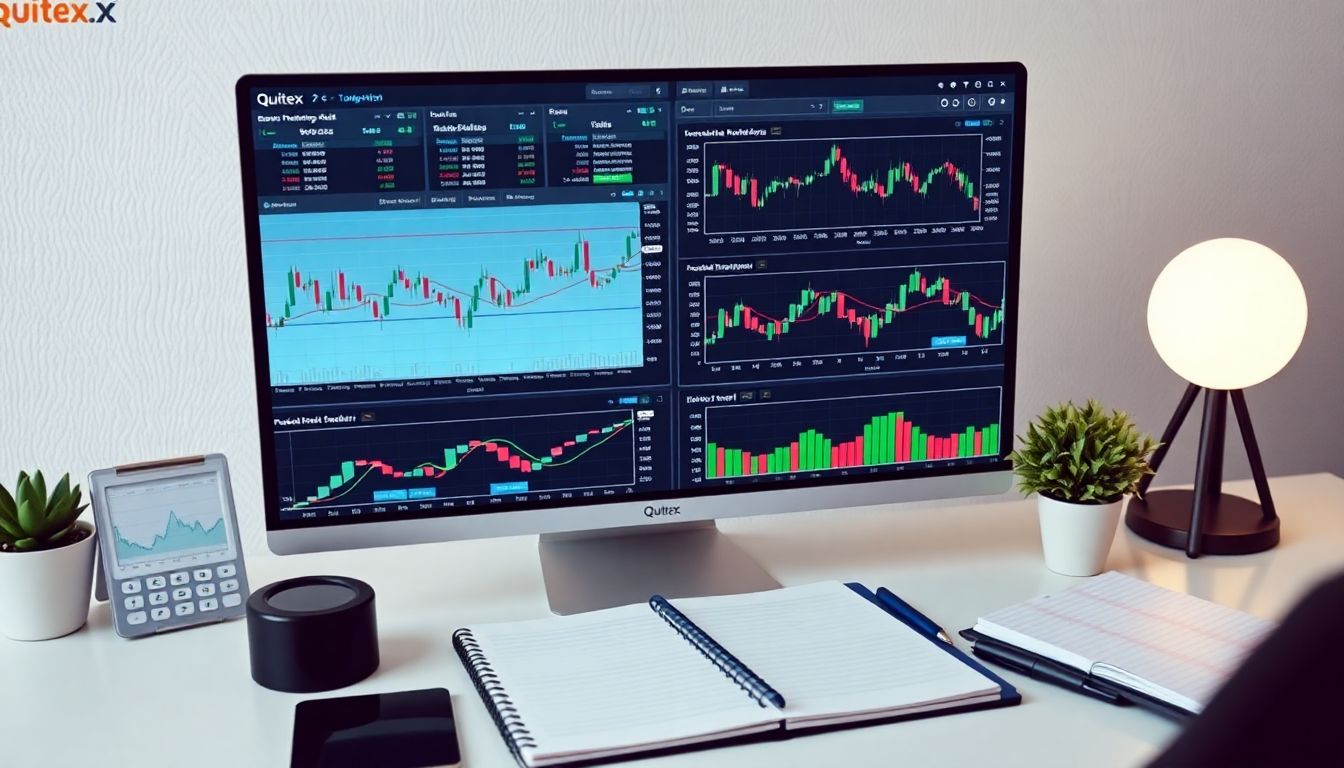
Quotex Money Management: A Trader's Guide to Profitability
Want to make money consistently with Quotex? It's doable! But, binary options trading is risky. Bad money management can make things way worse. Quotex is a platform to trade binary options, but you need a solid plan. This article is about to give you the secrets for money management that works. Keep reading for strategies to boost success.
Understanding the Basics of Quotex Trading
Before we dive into the "how", let's cover the "what." Understanding Quotex and how it works is key. You can't manage what you don't know.
Quotex Platform Overview
Quotex is a spot for trading binary options. It offers many assets, like currencies and stocks. The platform is pretty easy to use. Keep in mind, Quotex focuses on binary options.
Key Trading Terms and Concepts
A few terms are important. "Expiry time" is when your trade ends. "Strike price" is the price you are betting on. "Call" means you think the price will go up. "Put" means you think it will go down. "Payout percentage" is how much you could win.
Risk Factors Specific to Binary Options on Quotex
Binary options are high-risk. You can win big, but you can also lose it all. Your profit is limited. If you are wrong, you lose everything you bet. Volatility can make trading very unpredictable.
Core Money Management Principles for Quotex
Money management is your shield. Good management can protect you. It can also help grow your funds.
The Importance of Risk-Reward Ratio in Binary Options
Risk-reward ratio tells you how much you could win vs. how much you could lose. In binary options, this is often not in your favor. You might risk $100 to win $80. To make profit, you have to win often. Account for this when you trade.
Determining Your Capital Allocation Per Trade
Don't bet too much on one trade. A good rule is to risk 1-5% of your money. If you are new, start with just 1%. This keeps losses small.
Setting Stop-Loss and Take-Profit Levels (Considerations)
Binary options don't have stop-loss orders. Instead, watch your trades closely. If a trade goes wrong, you can close it before the expiry time. This can reduce your loss. Also, take profit early if the market shifts fast.
Proven Money Management Strategies for Quotex Traders
Now for the good stuff. These strategies can help you.
The Fixed Percentage Strategy
Risk the same percent of your money on each trade. For example, risk 2% on every trade. This makes things simple. It also stops emotions from controlling your choices.
The Martingale Strategy (and Its Risks)
This strategy doubles your bet after a loss. The idea is to win back your losses. But, it's very risky! You could lose all your money fast. Only experienced traders should try this. They should also have lots of extra funds.
The Anti-Martingale (Paroli) Strategy
This is the opposite of Martingale. You raise your bet after you win. This lets you gain from winning streaks. It also limits how much you could lose.
Implementing Your Money Management Plan on Quotex
Having a plan isn't enough. You need to use it!
Setting Up Trading Limits and Alerts on Quotex
See if Quotex lets you set limits. If not, use a spreadsheet. Write down your rules and stick to them.
Tracking Your Trades and Analyzing Performance
Write down every trade. Note the asset, time, bet size, and result. Use this info to see what works. What doesn't?
Adjusting Your Strategy Based on Performance Data
Use your trade history. If you lose a lot, lower your bet size. If you win a lot, maybe raise your profit target. Keep making small changes to get better.
Psychological Aspects of Money Management
Your mind matters too. Emotions can mess up your trading.
Managing Emotions and Avoiding Revenge Trading
Trading can be stressful. Fear, greed, and anger are normal. Do not let them make you trade badly. After a loss, don't rush to win it back. Stick to your plan.
The Importance of Discipline and Patience
Be disciplined. Follow your rules. Don't give up if you don't get rich quick. Trading takes time.
Developing a Long-Term Trading Mindset
Think of trading as a long journey. Focus on steady growth. Protect your funds.
Conclusion
Good money management is key to Quotex. Be disciplined. Be patient. Keep learning. Use these plans and trade smart.

10 Beginner-Friendly Trading Strategies to Kickstart Your Journey
Want to make money in the stock market? The financial markets can be exciting. Many think it's too hard. Others fear losing their savings. Trading can be simple, though! Using smart plans can help anyone. This article will give you ten easy ways to trade.
Understanding the Basics of Trading
Before diving into strategies, it is key to know the basics. What exactly are you trading? What moves markets? How do you handle risk?
What are Assets?
Assets are what you buy and sell. Stocks mean owning part of a company. Bonds mean lending money to a company or government. Forex involves trading different country's money. Cryptocurrencies are digital money, like Bitcoin. Each has its own risks and rewards.
Trading Jargon and Terminology
The trading world has its own lingo. The "bid-ask spread" is the difference between the buying and selling prices. "Leverage" means borrowing money to trade more. A "stop-loss" order automatically sells your asset if it drops to a certain price. Getting comfortable with these terms is crucial.
Risk Management 101
Smart trading requires managing risk. Never risk more than you can lose. "Position sizing" means deciding how much of an asset to buy. A good rule is to risk no more than 1% to 2% of your total money on a single trade. This way, even if a trade goes wrong, you're still in the game!
Strategy 1: Trend Following
Trend following is a simple way to trade. It means going with the current market direction. When the price goes up, you buy. When it drops, you sell.
Identifying Trends
How do you spot a trend? Look at a price chart. If prices are making higher highs and higher lows, it is an uptrend. If they are making lower highs and lower lows, it is a downtrend. Moving averages can help. A moving average shows the average price over a period.
Entry and Exit Points
To enter a trade, wait for the price to break above a recent high in an uptrend. Place a stop-loss order below the recent low. To exit, sell when the price breaks below a moving average.
Example of Trend Following in Practice
Consider Apple (AAPL). Suppose AAPL has been making higher highs for weeks. The price breaks above $150. This could be a good time to buy. Place a stop-loss order at $145. If the stock price rises to $160, you could sell. This locks in your profit.
Strategy 2: Moving Average Crossover
A moving average crossover is a simple yet effective tool. It can show possible shifts in momentum. This technique uses two moving averages. One is faster and one is slower.
What are Moving Averages?
A simple moving average (SMA) calculates the average price over a specific period. An exponential moving average (EMA) gives more weight to recent prices. Many traders feel EMA's react quicker to changes.
Setting Up the Crossover
Pick two moving averages. A common pair is the 50-day and 200-day. The 50-day is your faster average. The 200-day is your slower average.
Interpreting the Signals
If the 50-day crosses above the 200-day, it is a bullish sign. This may mean it's time to buy. If the 50-day crosses below the 200-day, it is a bearish sign. This might be the time to sell.
Strategy 3: Breakout Trading
Breakout trading is all about timing. It means buying when the price breaks through key levels. Traders need to identify levels of support and resistance.
Identifying Support and Resistance Levels
Support is a price level where buyers step in. This keeps the price from falling further. Resistance is a price level where sellers step in. This prevents the price from rising higher.
Confirmation Signals
When the price breaks above resistance, volume should increase. High volume confirms the breakout. It shows that many buyers are interested.
Risk Management for Breakout Trades
Set a stop-loss order just below the breakout level. Set a profit target based on the size of the breakout. For example, if the price breaks $10 above resistance, aim for a $10 profit.
Strategy 4: Range Trading
Range trading works best when the market isn't trending. Instead, prices bounce between support and resistance levels.
Identifying Range-Bound Markets
A range-bound market is in consolidation. The price moves sideways. It does not make higher highs or lower lows.
Executing Range Trades
Buy when the price hits the support level. Sell when it reaches the resistance level. Place stop-loss orders just outside these levels.
Benefits and Risks
Range trading can be less stressful than trend following. The risks are lower too. But, ranges can break down unexpectedly. Stay alert!
Strategy 5: Buy and Hold
Buy and hold is a super easy strategy. It works for the long term. Buy good stocks and hold them for years.
Choosing the Right Stocks
Look for companies with solid financials. They should also have good growth potential. Blue-chip stocks are often a good choice.
The Power of Compounding
Compounding means your earnings also earn money. Over time, this can lead to big gains. Buy and hold lets compounding work its magic.
Risk Mitigation for Long-Term Investments
Mix up your investments! Do not put all your money in one stock. Review your holdings once a year. Make adjustments if needed.
Strategy 6: Dollar-Cost Averaging (DCA)
Dollar-cost averaging (DCA) reduces risk. It also takes the stress out of timing the market.
How DCA Works
Invest a set amount of money at regular times. For example, invest $100 every month. Do this, no matter the price.
Benefits of DCA in Volatile Markets
When prices drop, you buy more shares. When prices rise, you buy less. Over time, your average cost goes down. DCA can help you survive ups and downs.
Setting Up a DCA Plan
Open a brokerage account. Decide how much to invest. Choose how often to invest. Set up automatic transfers from your bank.
Strategy 7: The 50-20-10 Strategy
This strategy splits your investments. It provides a balanced approach. It is ideal for beginners who are nervous.
Understanding the Strategy
Put 50% of your money in established stocks. These are safe, reliable companies. Place 20% in growth stocks. These have more upside potential. Invest 10% in speculative stocks. These are riskier but could give big returns. Keep 20% in cash.
How to Adapt
Change the percentages based on your risk tolerance. If you're conservative, increase the established portion. If you're aggressive, increase the growth portion.
Examples
Suppose you have $1,000 to invest. Put $500 in a big company. Think of Johnson & Johnson (JNJ). Invest $200 in a growing company. A stock such as Tesla (TSLA) could work. Put $100 in a riskier stock. A smaller tech company might fit. Keep $200 in cash.
Strategy 8: Scalping
Scalping is fast-paced. It requires strict discipline. It's for advanced beginners.
Timeframes
Scalpers use very short timeframes. One-minute or five-minute charts are common.
Common Setups
Scalpers look for quick price moves. They may use technical indicators such as RSI and MACD. They aim to enter and exit trades in minutes.
Benefits and Risks
Scalping can produce small, quick profits. It requires constant attention. The risks include big losses from sudden moves. Only try scalping if you can handle stress.
Strategy 9: Pairs Trading
Pairs trading involves finding two related assets. These assets usually move together. You profit when they go out of sync.
Correlations
Find two stocks in the same industry. For example, Coca-Cola (KO) and PepsiCo (PEP). These often have a strong correlation.
What to do with Correlation
If KO goes up but PEP stays flat, sell KO and buy PEP. You are betting that PEP will soon catch up.
Benefits and Risks
Pairs trading is less risky than trading a single stock. It requires research. Correlations can break down. Manage your risk carefully.
Strategy 10: News Event Trading
Big news can move markets. Trading news events can be profitable. It can also be risky.
Identifying Events
Keep an eye on the economic calendar. Watch for announcements such as interest rate decisions. Also keep an eye on earnings reports.
Possible Setups
If a company beats earnings expectations, the stock might jump. Buy before the news is released. This can be very risky.
Benefits and Risks
News trading offers the chance for quick profits. News can be unpredictable. False rumors can cause losses. Use stop-loss orders.
Conclusion
This article showed you ten trading strategies for beginners. We talked about trend following, moving averages, and breakouts. We also covered dollar-cost averaging and pairs trading. Remember, learning, practice, and risk control are key. Pick a strategy that suits your risk level. Start your trading adventure now!
What is difference between crypto and binary trading.
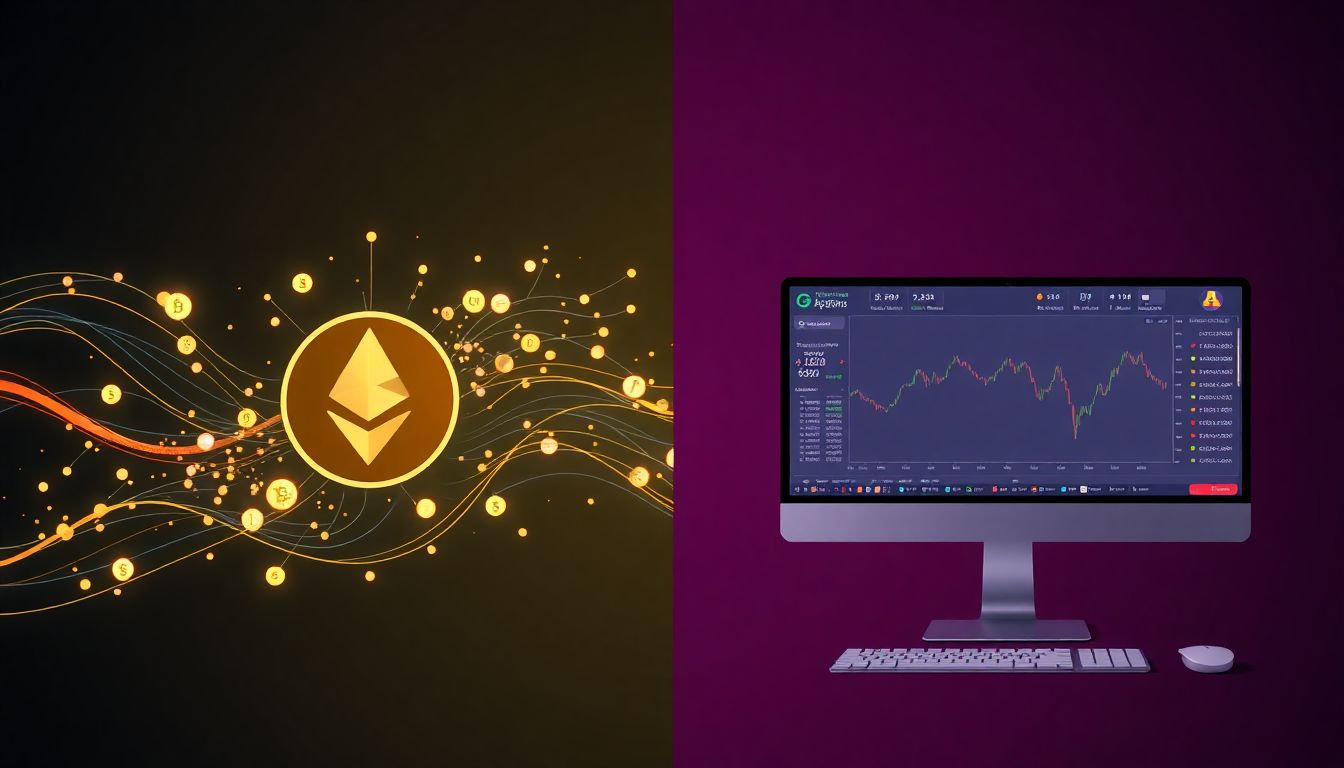
Crypto Trading vs. Binary Options: Unveiling the Key Differences
Imagine wanting to dip your toes into the financial markets. You're faced with two options: crypto trading and binary options. Both promise profits, but which one is right?
Cryptocurrency trading involves buying and selling digital assets. Binary options trading involves predicting the price direction of an asset.
While both offer potential gains, crypto and binary options differ greatly. They have different risks, regulations, and trading rules. This article breaks down these differences. It will empower you to make smart choices.
Understanding the Fundamentals
Let's lay the groundwork by defining the core concepts.
What is Cryptocurrency Trading?
Cryptocurrency trading involves digital or virtual currencies like Bitcoin. These currencies use cryptography for security. Blockchain technology is at the heart of it all. It's a decentralized, public ledger. This records all transactions across many computers.
Crypto trading happens on exchanges. You use wallets to store your crypto. Order types include market orders and limit orders. This market operates 24/7.
What is Binary Options Trading?
Binary options trading is different. It's based on a "yes" or "no" proposition. Will an asset's price be above a certain level at a specific time? If you're right, you get a fixed payout. If you're wrong, you lose your investment.
Binary options have fixed payouts and expiry times. You pick a broker and use their platform. The trading is simpler. It involves predicting an outcome within a set time.
Key Differences in Trading Mechanics
Let's emphasize the distinct approaches to trading in each market.
Underlying Assets and Market Volatility
Cryptocurrency trading offers a wide selection of coins and tokens. The market is known for its volatility. Prices can swing wildly, any time. It's open 24/7, so it never sleeps.
Binary options can be based on stocks and indices. Forex and commodities can be used too. Volatility depends on the underlying asset. It is important to remember that it may vary.
Profit and Loss Potential
Cryptocurrency profit is based on the asset's price changes. There's potential for big gains. However, big losses are possible too. The upside is unlimited. This goes for the downside too.
Binary options have fixed payouts. You get a set amount if you're right. Your profit is limited no matter how much the price moves. It's all or nothing.
Risk Management Strategies
Cryptocurrency trading offers various risk management tools. Use stop-loss orders to limit losses. Diversification is when you spread your investments. Position sizing involves managing the amount of capital you risk. Dollar-cost averaging involves investing a fixed amount regularly.
Binary options have fewer risk management options. You mainly focus on picking the strike price. Focus on selecting the correct expiry time. Managing the risk is more challenging.
Regulatory Landscape and Security
Let's discuss the legal and security aspects of each trading method.
Regulatory Oversight
The cryptocurrency world is evolving. Regulatory landscapes differ worldwide. Some places have clear rules. Others are still figuring things out.
Binary options are heavily regulated. Many countries have banned them. This is due to worries about fraud. Concerns of market manipulation exist as well.
Security Concerns
Cryptocurrency faces security risks. Hacking and theft are possibilities. Scams are common too. It is important to use secure wallets. Choosing reliable exchanges is key.
Binary options can involve fraudulent brokers. Market manipulation can happen too. Transparency can be lacking. Exercise caution.
Advantages and Disadvantages
Let's provide a balanced view. Here's a look at the pros and cons.
Cryptocurrency Trading: Pros and Cons
Cryptocurrency trading offers high return potential. It opens diversification options. It's a decentralized market.
However, it comes with high volatility. There is also regulatory uncertainty. Security risks are a concern.
Binary Options Trading: Pros and Cons
Binary options are simple to grasp. They offer fixed payouts. Short-term trades are possible.
However, profit potential is limited. There's a high risk of losing money. Fraud is a risk, too.
Which is Right for You?
Let's offer guidance on how to choose between the two.
Assessing Your Risk Tolerance
Consider your comfort with volatility. Can you handle potential losses? How much capital are you willing to risk? These questions can help you decide.
Investment Goals and Time Horizon
Are you seeking long-term growth? Maybe you're after short-term gains? How much time can you spend trading and researching? Your goals matter.
Conclusion
Crypto trading and binary options offer unique opportunities. However, they come with distinct risks. Crypto is volatile. Binary options are more rigid.
Research thoroughly. Manage your risk. Understand the rules. Choose what aligns with your goals and risk appetite. With wisdom, you can navigate this wild world.

Binary Trading: A Comprehensive Guide for Beginners and Experts
Binary trading can be both enticing and risky. It offers the chance for quick profits, but also comes with the potential for significant losses. Understanding the ins and outs of binary options is crucial for anyone looking to enter this market.
What is Binary Trading? A Simple Explanation
Binary trading involves predicting whether the price of an asset will rise or fall within a specific time frame. If your prediction is correct, you earn a payout. If not, you lose your investment.
The Allure of High Returns and Quick Profits
The appeal of binary trading lies in its straightforward approach. Many traders are drawn to the promise of high returns in a short time. Some brokers even offer payouts of up to 90% on successful trades, making it tempting for new investors.
Understanding the Inherent Risks: Potential for Loss
Despite the potential for high gains, binary trading is not without its risks. The market can be unpredictable, and it is possible to lose your entire investment quickly. Therefore, understanding risk management is essential.
Getting Started with Binary Trading: A Step-by-Step Guide
Choosing a Reputable Broker: Key Factors to Consider
Selecting a reliable broker is crucial for successful binary trading. Here are some key factors to consider:
- Regulation: Ensure the broker is regulated by a recognized authority.
- Fees: Look for transparent fee structures without hidden charges.
- Customer Support: Check for responsive customer service options.
Setting up Your Trading Account: Verification and Funding
Once you choose a broker, you need to set up your trading account. The process typically involves:
- Verification: Submit identification documents for verification.
- Funding: Fund your account using credit cards, bank transfers, or e-wallets.
Essential Tools and Resources for Binary Trading
To enhance your trading experience, consider using these essential tools:
- Trading Platforms: Familiarize yourself with the platform’s interface.
- Market News: Stay updated with the latest market news and trends.
- Educational Materials: Utilize webinars, eBooks, and tutorials to improve your skills.
Binary Trading Strategies: Mastering the Market
Technical Analysis Techniques for Binary Options
Identifying Support and Resistance Levels
Support and resistance levels are vital in technical analysis. Identify these points on charts to predict price movements effectively.
Using Moving Averages and Indicators
Leverage moving averages and indicators to spot trends. These tools can help guide your entry and exit points.
Fundamental Analysis in Binary Trading
Economic News and Market Events
Stay informed about economic news, as these events can significantly impact market trends.
Company Performance and Financial Statements
For stocks, understanding company performance through financial statements is key. This knowledge gives you better insight into potential price movements.
Risk Management Strategies in Binary Options Trading
Implementing effective risk management strategies is essential. Consider:
- Setting Stop-Loss Levels: Limit potential losses by setting stop-loss orders.
- Diversifying Investments: Avoid putting all your money in one trade.
Binary Options Trading Platforms and Software
Popular Binary Trading Platforms: A Comparison
Evaluate various trading platforms based on:
- User Interface and Features: Look for seamless navigation and useful features.
- Mobile App Availability: Consider whether the platform has a mobile app for trading on-the-go.
Advanced Trading Software and Tools
Automated Trading Robots
Automated trading robots can execute trades on your behalf based on specific criteria.
Charting and Analysis Packages
Utilize advanced charting tools to analyze market trends and improve your trading strategies.
Advanced Binary Trading Techniques: Optimization and Refinement
Mastering Option Types: Calls and Puts
Understanding Payouts and Return on Investment
Gain knowledge about the payouts of call and put options. Understanding potential returns helps in decision-making.
Factors Affecting Option Pricing
Be aware of factors such as market volatility and time decay that can influence the pricing of options.
Developing a Trading Plan: Setting Goals and Managing Risk
Defining Entry and Exit Strategies
Create clear entry and exit strategies to maintain discipline in trading.
Monitoring Performance and Adjusting Tactics
Regularly review your trading performance and adjust your tactics as needed.
Utilizing Leverage and Margin Effectively
Understanding how to use leverage and margin can amplify your potential profits. However, it also increases risk, so proceed with caution.
Conclusion: Navigating the World of Binary Trading
Key Takeaways and Actionable Steps
- Choose a reputable broker.
- Implement risk management techniques.
- Stay informed about market trends.
Resources for Continued Learning
Continued education is crucial. Look for online courses, forums, and communities related to binary trading.
The Importance of Responsible Trading and Risk Management
Approach binary trading with responsibility. Always manage your risks and never invest more than you can afford to lose.
Engage with the market wisely and enjoy the learning journey ahead. Start your binary trading experience with the right mindset and tools!
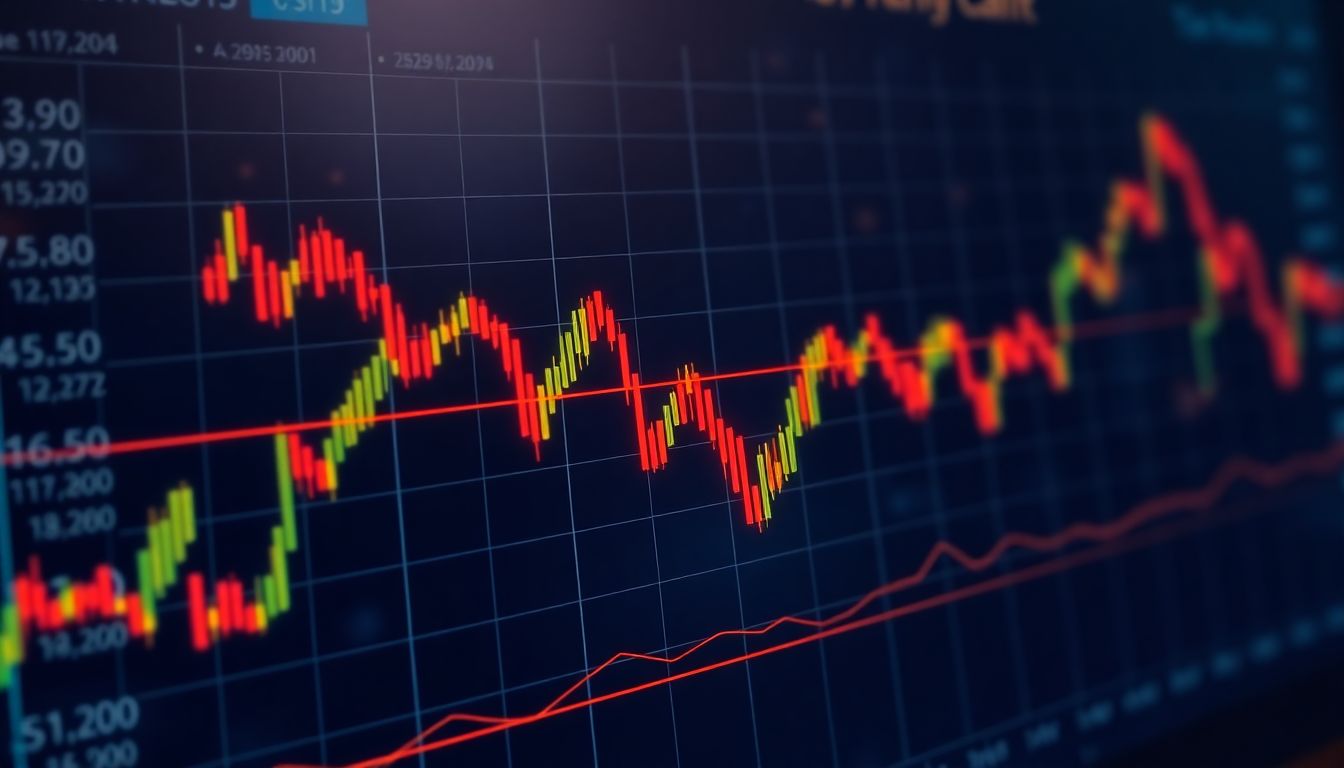
Stop Loss and Take Profit in Trading: Your Essential Guide to Risk Management
Introduction: Protecting Your Capital and Maximizing Profits
Risk management is crucial in trading. It helps protect your capital and ensures you can keep trading over time. Understanding how to effectively use stop loss and take profit orders is the key to becoming a successful trader.
The Importance of Risk Management in Trading
Risk management helps traders avoid significant losses. By controlling risks, you can make informed decisions and maintain steady growth. Key benefits include:
- Protecting your trading account
- Reducing emotional stress
- Building confidence in your strategies
Defining Stop Loss and Take Profit Orders
Stop loss orders automatically sell a security when it reaches a specified price. This limits your losses if the market moves against you. Take profit orders, on the other hand, lock in profits by selling a security when it hits a target price.
The Psychological Benefits of Using Stop Losses and Take Profits
Using these orders helps minimize emotional decision-making. Knowing that there’s a plan in place for both losses and gains provides peace of mind. This allows traders to focus on strategy rather than getting caught up in short-term market movements.
Understanding Stop Loss Orders: Protecting Against Losses
How Stop Loss Orders Work: A Step-by-Step Guide
- Select the position: Determine the trade you want to protect.
- Identify the stop loss price: Choose a price level where you want to exit the trade if it goes against you.
- Place your order: Input the stop loss order into your trading platform.
- Monitor the trade: Keep an eye on the market, knowing your losses are capped.
Different Types of Stop Loss Orders: Market vs. Limit
- Market Stop Loss: Executes at the best available price once the stop loss level is hit. This can result in slippage.
- Limit Stop Loss: Sets a specific price to sell, avoiding slippage but might not execute if the security drops past the limit.
Real-World Example of a Successful Stop Loss Order
A trader buys shares of Company Z at $50. They set a stop loss at $48. If the stock dips to $48, the order triggers, selling the shares. This protects the trader from further losses, as the price later drops to $40 (Source: Investopedia).
Mastering Take Profit Orders: Securing Your Gains
How Take Profit Orders Function: Mechanical Profit-Taking
Take profit orders automatically close a position when the price reaches your target level. This secures your profits without needing constant monitoring.
Setting Realistic Take Profit Levels: Factors to Consider
When setting take profit levels, consider:
- Current market conditions
- Historical price movements
- Support and resistance levels
- Your overall trading strategy
Example of a Trade Utilizing Take Profit
A trader purchases shares of Company A for $30. They set a take profit level at $35. As the stock rises and hits $35, the take profit order executes, locking in a $5 gain per share (Source: CNBC).
Combining Stop Loss and Take Profit: A Powerful Strategy
The Synergy of Stop Loss and Take Profit: Risk-Reward Ratio
By using both orders, you create a balanced risk-reward ratio. This helps you manage your trades more effectively and can enhance your overall profitability.
Determining Optimal Stop Loss and Take Profit Levels
To find the best levels:
- Analyze recent market trends
- Consider volatility
- Assess your risk tolerance
- Use technical analysis to set informed levels
Case Study: A Successful Trade Using Both Orders
In a recent trade, a trader bought a stock at $100, setting a stop loss at $95 and a take profit at $110. The stock climbed to $110, triggering the take profit order, allowing the trader to exit with a nice profit, while the stop loss protected them from potential losses if things moved the other way (Source: Bloomberg).
Advanced Techniques and Considerations
Trailing Stop Loss Orders: Adapting to Market Conditions
A trailing stop loss moves with the price. For example, if a stock rises, the stop loss raises automatically, securing profits while allowing for potential gains.
Using Stop Loss and Take Profit with Different Trading Styles
- Day Trading: Often requires tighter stop loss and take profit levels due to quick market fluctuations.
- Swing Trading: Longer time frames allow for wider stop loss and take profit ranges.
The Role of Risk Tolerance in Order Placement
Knowing your risk tolerance helps in setting appropriate stop loss and take profit levels. This ensures you are comfortable with your trading approach and can stick to your strategy.
Conclusion: Implementing Stop Loss and Take Profit for Success
Key Takeaways: Protecting Capital and Maximizing Returns
- Stop loss orders limit potential losses.
- Take profit orders secure gains.
- Combining both enhances trading effectiveness.
Actionable Steps: Setting Up Orders on Your Trading Platform
- Log into your trading platform.
- Choose the security you want to trade.
- Set your stop loss and take profit levels.
- Monitor your trades and adjust as necessary.
Resources for Further Learning
- Investopedia: Understanding Stop Loss Orders
- CNBC: Trading Strategies
- Bloomberg: Stock Market Insights
By effectively using stop loss and take profit orders, traders can manage risks and enhance their profitability in the financial markets.

Buy or Sell: Your Definitive Guide to Making Smart Financial Decisions
The decision to buy or sell can shape your financial future. Understanding when to make these choices can lead to better outcomes. This guide will walk you through critical aspects of these significant decisions.
The Crucial Decision of Buy vs. Sell
The Allure of Ownership: Why We Buy
We often buy because of desire. Whether it’s a home, a car, or stocks, ownership brings satisfaction. The idea of having something to call your own is powerful.
- Emotional Factors: Buying can fulfill a dream or need.
- Utility: It provides everyday benefits, improving quality of life.
The Power of Letting Go: Why We Sell
Selling allows us to move on or gain cash. It can be tough to part with something valuable, but it can lead to new opportunities.
- Financial Gain: Selling can free up cash for better investments.
- Change: It allows for a shift in focus or goals.
Navigating the Buy/Sell Dilemma: A Strategic Approach
Understanding when to buy or sell requires a clear strategy. Ask yourself critical questions about needs, market trends, and personal goals.
Understanding the "Buy" Decision
Evaluating Your Needs and Wants: Defining Your "Why"
What drives your decision to buy? It’s essential to distinguish between needs and wants. This clarity will guide your purchase effectively.
Conducting Thorough Research: Due Diligence Before Purchase
Do your homework. Explore options, read reviews, and compare prices. The more you know, the better your buying decision will be.
- Market Analysis: Study current prices and trends.
- Seek Advice: Talk to experts or read credible sources.
Financial Considerations: Affordability and Long-Term Implications
Ask yourself if you can truly afford it. Consider not just the price tag but also the long-term costs.
- Budgeting: Create a budget to see what fits.
- Future Costs: Factor in taxes, maintenance, and insurance.
Understanding the "Sell" Decision
Assessing Your Assets: Determining Market Value and Potential Profit
When selling, know the value of your items. Research comparable items to understand what you can expect to earn.
- Market Evaluation: Use tools to estimate value.
- Timing: Consider if the market is favorable for selling.
Preparing Your Assets for Sale: Enhancing Appeal and Maximizing Returns
Make your item as attractive as possible. Enhancements can lead to higher offers.
- Clean and Repair: Put in effort to make it look good.
- Effective Marketing: Use appealing photos and descriptions.
Navigating the Selling Process: From Listing to Closing
Plan your selling strategy. List on the right platforms and handle inquiries professionally to streamline the process.
- Choose Platforms: Select the best website or venue for your sale.
- Negotiate Smartly: Be clear about your price and be open to offers.
Factors Influencing Buy vs. Sell Decisions
Market Trends and Economic Conditions: Impact on Pricing and Demand
Current market conditions play a key role in your decision. Prices fluctuate based on demand and availability.
Personal Circumstances and Financial Goals: Aligning Decisions with Priorities
Think about how this choice fits into your life. Are you pursuing short-term gains or long-term stability?
Risk Tolerance and Investment Strategies: Long-Term vs. Short-Term Goals
Assess your comfort with risk. Some prefer steady investments, while others are fine with more volatile choices.
Strategies for Smart Buying and Selling
Negotiation Tactics: Maximizing Value in Both Scenarios
Negotiation is key. Whether buying or selling, know your worth and be prepared to discuss it confidently.
Utilizing Professional Assistance: Real Estate Agents, Financial Advisors, etc.
Sometimes, expert help is beneficial. Professionals can guide you through complex processes, ensuring you make informed choices.
Post-Transaction Considerations: Maintenance, Taxes, and Other Implications
Remember that buying or selling doesn't end once the deal is done. Consider how you'll manage your new asset or any taxes from the sale.
Conclusion: Making Informed Buy or Sell Decisions
Key Takeaways: Recap of Essential Considerations
- Decide between emotional attachment and financial reasoning.
- Research is key for informed decisions.
- Understand market conditions and personal objectives.
Actionable Steps: Putting Your Knowledge to Work
Start now. Make a list of things you want to buy or sell. Research them and set goals that fit your lifestyle and finances.
Looking Ahead: Continuous Learning and Adaptability
Keep learning. The market changes, and so do personal finances. Stay flexible to ensure you're making the best decisions.

Conquer the Stock Market: A Beginner's Guide to Investing
Unlocking your financial future can start with understanding the stock market. Investing in stocks offers exciting possibilities for growth and wealth creation. While it holds potential, it's essential to know the risks involved.
The Allure of the Stock Market: Potential for Growth and Wealth Creation
The stock market represents a unique opportunity to build wealth. Historically, investors have gained substantial returns by choosing the right stocks. What's the secret? It lies in understanding how to navigate this dynamic environment wisely.
Understanding the Risks and Rewards: A Balanced Perspective on Stock Market Investment
Investing isn’t just about profits. It also involves risks. Market fluctuations can lead to losses. However, informed investors can minimize risks while capitalizing on growth opportunities. Striking a balance between risk and reward is key.
Getting Started: Your First Steps Towards Stock Market Success
Starting your investment journey doesn't require a financial degree. Here’s a simple roadmap:
- Set Your Goals: Determine what you want to achieve through investing.
- Educate Yourself: Familiarize yourself with basic stock market concepts.
- Open an Account: Choose a broker and start with a small investment.
- Start Investing: Gradually build your portfolio as you gain confidence.
Understanding Stocks and the Stock Market
What are Stocks? Ownership and Equity Explained
Stocks represent ownership in a company. When you buy shares, you own a fraction of that business. This can lead to dividends and capital gains, making stocks a popular investment choice.
How the Stock Market Works: A Simplified Explanation of Trading and Valuation
The stock market operates like an auction. Buyers and sellers determine stock prices based on demand and supply. Companies list their shares through Initial Public Offerings (IPOs), allowing public investment.
Key Stock Market Terminology: Demystifying Jargon for Beginners
- Bull Market: A rising market.
- Bear Market: A declining market.
- Dividends: Payments made to shareholders from profits.
- IPO: Initial Public Offering, the first time a company sells shares.
Investing Strategies for Beginners
Diversification: Spreading Your Risk Across Multiple Stocks and Sectors
Don’t put all your money into one stock. Diversifying helps minimize risks. Invest in various sectors to protect your portfolio from sector-specific downturns.
Dollar-Cost Averaging (DCA): A Time-Tested Approach to Minimizing Risk
DCA involves investing a fixed amount regularly, regardless of market conditions. This strategy reduces the impact of volatility and lowers average purchase costs.
Long-Term Investing vs. Short-Term Trading: Choosing the Right Strategy for You
Long-term investing focuses on gradual growth, while short-term trading seeks quick profits. Decide which method aligns with your financial goals and risk tolerance.
Fundamental vs. Technical Analysis: Choosing Your Approach
Fundamental Analysis: Evaluating a Company's Intrinsic Value
Fundamental analysis looks at a company's financial health. This includes revenue, earnings, and overall market position. It helps investors determine if a stock is overvalued or undervalued.
Analyzing Financial Statements: Key Metrics for Stock Valuation
Focus on these essential metrics:
- Earnings Per Share (EPS): Profit attributed to each share.
- Price-to-Earnings (P/E) Ratio: Price of a stock relative to its earnings.
- Debt-to-Equity Ratio: Company’s financial leverage.
Identifying Undervalued Stocks: A Fundamental Approach
Look for stocks trading below their intrinsic value. Research and analysis can reveal hidden gems that the market may have overlooked.
Technical Analysis: Chart Patterns and Market Trends
Technical analysis examines price movements using charts. It aims to predict future price changes based on historical data.
Using Technical Indicators: Moving Averages and Relative Strength Index (RSI)
Traders often use indicators like:
- Moving Averages: Help identify trends.
- RSI: Indicates whether a stock is overbought or oversold.
Spotting Trends and Potential Trading Opportunities
Watch for patterns in stock movements to find potential buying or selling opportunities.
Risk Management and Portfolio Optimization
Managing Risk: Protecting Your Investments and Minimizing Losses
Investing carries inherent risks, but strategies exist to manage them effectively.
Setting Stop-Loss Orders: Limiting Potential Downside
Place stop-loss orders to sell stocks at predetermined prices. This protects your investment by capping potential losses.
Diversifying Your Portfolio Across Asset Classes: Reducing Overall Risk
Include different asset classes, like bonds and real estate, to create a robust investment portfolio.
Portfolio Optimization: Fine-Tuning Your Investments for Maximum Returns
Regularly review your portfolio’s performance. Adjust as needed to align with your goals and market changes.
Rebalancing Your Portfolio: Maintaining Your Desired Asset Allocation
Rebalance your portfolio periodically to ensure it reflects your investment strategy. This involves selling overperforming assets and buying undervalued ones.
Regularly Reviewing Your Portfolio: Adapting to Market Conditions
Stay informed about market trends. Adjust your investments as economic conditions change.
Resources and Tools for Stock Market Success
Reliable Sources of Financial News and Information
Stay updated with reputable sources like financial news websites, podcasts, and newsletters. They provide valuable insights into market trends.
Brokerage Accounts and Trading Platforms: Choosing the Right Tools
Select a brokerage that aligns with your needs. Look for platforms with user-friendly interfaces and robust research tools.
Educational Resources: Books, Courses, and Online Communities
Enhance your knowledge through educational resources. Books and online courses can build your investment skills, while communities provide support.
Conclusion: Your Journey to Stock Market Mastery
Key Takeaways: Actionable Steps to Build Your Financial Success
- Understand your goals.
- Educate yourself about the stock market.
- Diversify your investments.
- Regularly review and adjust your portfolio.
Continuous Learning: Staying Informed and Adapting to Market Changes
The stock market is always evolving. Keep learning, stay informed, and be ready to adapt. Your journey to stock market mastery begins today.
Is Binance Secure?
Is Binance Secure? A Deep Dive into Binance's Security Measures Imagine waking up to find your crypto gone. It's a nightmare. This...

-
Binary Trading: A Comprehensive Guide for Beginners and Experts Binary trading can be both enticing and risky. It offers the chance for ...
-
Unleash Your Inner Trader: Personal Trading Ideas for Financial Success Ever feel lost looking at all those trading charts and terms? Yo...
